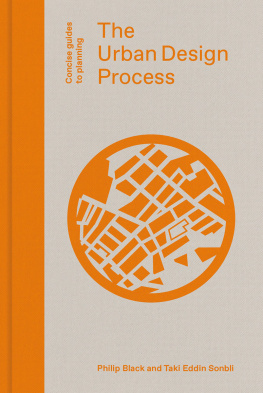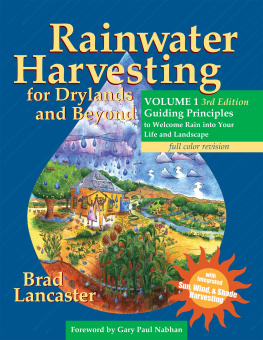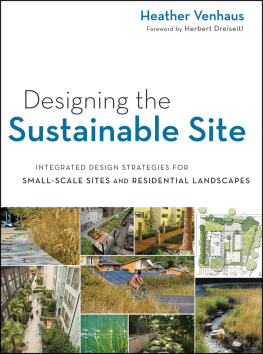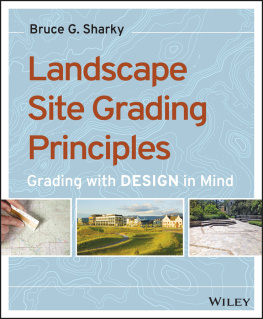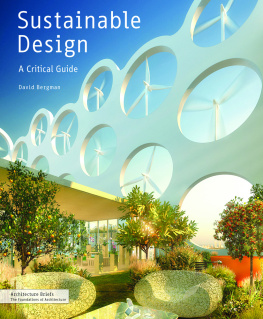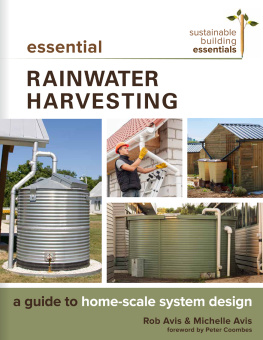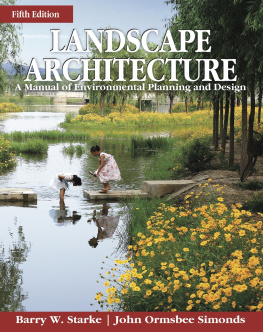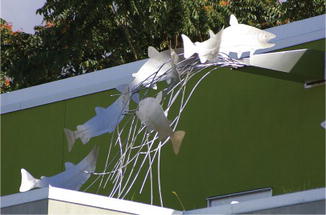On a rainy day in Portland, Oregon, a man stops at New Seasons Market at Arbor Lodge to pick up a few items for dinner. As he hurries inside, he looks up above the entrance canopy and notices that rain is spewing from a spout near the roof and onto a metal sculpture of salmon that appear to be swimming upstream against the current of the falling rain. For just a moment hes reminded that runoff from rain flows from rooftop to river; it had better be clean and plentiful!
Across the country, in Gainesville, Florida, a student at the University of Florida indulges in an evening workout at the Southwest Recreation Center. The position of her treadmill gives her a view through the glass facade to the entry landscape, where she can see that a water runnel leads from the building, across the sidewalk, into a lushly planted landscape; at the sidewalk edge, a filigree sculpture contains a column of blue light. Shes intrigued but puzzledcant quite figure out the message. As she leaves the building after her workout, she stops at the sculpture and reads a small plaque at its base; there she learns that the sculpture represents the palmettos cellular structure, and the blue light suggests the plants slurping of water that comes from the building roof. Like the man in Portland, she realizes that roof runoff is feeding the plants and that rain is a resource, not a waste product.
These brief examples highlight features of Artful Rainwater Design (ARD), an approach to sustainable stormwater management in which the management system is designed as a landscape amenity. ARD not only controls the quantity of runoff and improves its quality but adds experiential value to the landscape. The visible aspect of the design educates, entertains, or enlightensit celebrates rainwaters resource value and tells the story of how its being managed. The term was coined by Stuart Echols in 2005, as we began to research the topic. Artful is meant to suggest that the design is beautiful and engaging; Rainwater is used instead of stormwater because stormwater management has historically treated rainwater as a waste product to be removed. By using the term Artful Rainwater Design we want to emphasize that rain is a precious resource worthy of experience and celebration.
Figure I.1
The rain scupper at the New Seasons Market at Arbor Lodge in Portland, Oregon lets people realize rains important impact on rivers (design: Lango Hansen Landscape Architects PC; Ivan McLean; photograph: Stuart Echols).
Figure I.2
Students exercising in the rec center at the University of Florida are given the opportunity to come to a realization about rain (design: RDG Planning and Design; photograph: Kevin Thompson).
Onsite management of rain is required in more and more municipalities, as sewage- and stormwater-carrying pipes exceed capacity in cities and towns around the country. The days of combined sewer systems, which regularly sent untreated sewage into waterways during major storms, are waning. In fact, increasingly forward-looking regulations across the United States require that the first flush of large rain events (i.e., the initialand dirtiestrainfall up to 1 inches) be managed on site, and more and more states expect site design to manage a - to 1-inch storm. Rather than a burdensome regulation, we see this as an opportunity to create a more vibrant site design by using green infrastructure (soil and plants) rather than pipes to manage rain on a site. As Tom Liptan, retired environmental specialist of the Bureau of Environmental Services of Portland, Oregon, has said, Use the landscape! This approach is both logical and beneficial: Let the water nourish plants while the plants absorb pollutants, and let the water then function within the natural hydrologic system through infiltration and evapotranspiration.
Urban sites often lack the space necessary for traditional large stormwater detention ponds; expensive urban land demands clever thinking about rain capture. Runoff management can be achieved in this context through multiple small, dispersed systems, from green roofs to flow-through planters, from water harvesting systems to rain gardens. The end-of-pipe, back-of-lot, out-of-sight and out-of-mind stormwater management approach is losing viability. And making those small, dispersed runoff management systems visible and legible is a design opportunity. By creating sustainable stormwater management systems that visibly communicate their management strategies, we can make people aware of rain as a resource, and we can make them realize that we must both control the quantity and ensure the quality of rain for it to truly serve as the resource needed for natural systems to thrive.
This strategy gives designers an opportunity to advance the agenda of environmentally responsible design by making the systems not only visible and legible but beautiful. As Elizabeth Meyer stated in her manifesto published in Landscape Architecture , A concern for beauty and aesthetics is necessary for sustainable design if it is to have a significant cultural impact. ARD gives designers a further opportunity to advance the agenda of environmentally responsible design by making the systems beautiful. If we create a landscape that people enjoy and value, it will be maintained and sustained, and its environmental benefits will endure.
Therefore, this book is grounded in a set of principles we consider imperative for the future of rainwater management design:
Rainwater is a vital resource.
To ensure the resource value of rainwater, a sustainable stormwater management approach is imperative.
Current and imminent runoff management regulations in the United States point toward a full-site green infrastructure approach that manages small flows, especially first flush, in a system of small, dispersed, site-wide interventions.
To be truly sustainable, stormwater management must be beautiful so that people value it.
Using ARD as a sustainable stormwater management strategy is an opportunity that designers should seize.
What Does ARD Address?
Projects that incorporate ARD are usually designed to sustainably manage small rain events and the first flush of large rain events (i.e., the initialand dirtiestrainfall up to 1 inches). ARDs do not generally manage major flooding from large storms. But rain events up to 1 inches represent the majority of runoff in temperate climates, accounting for 60 to 90 percent of all rain events, depending on geographic location. Consequently, the ARD approach to rainfall management presents an exciting design strategy in the context of increasingly stringent requirements to manage first flush and small storms. In other words, the opportunity posed by ARDand presented in this bookis effective, beautiful, and enlightening management of small storm and first flush rainfall.
Our hope is that ARD will become the new normal of runoff management because it addresses so many important issues. ARD provides a strategy to:



